Afghan-Taliban peace talks an 'opportunity for peace'
- Published
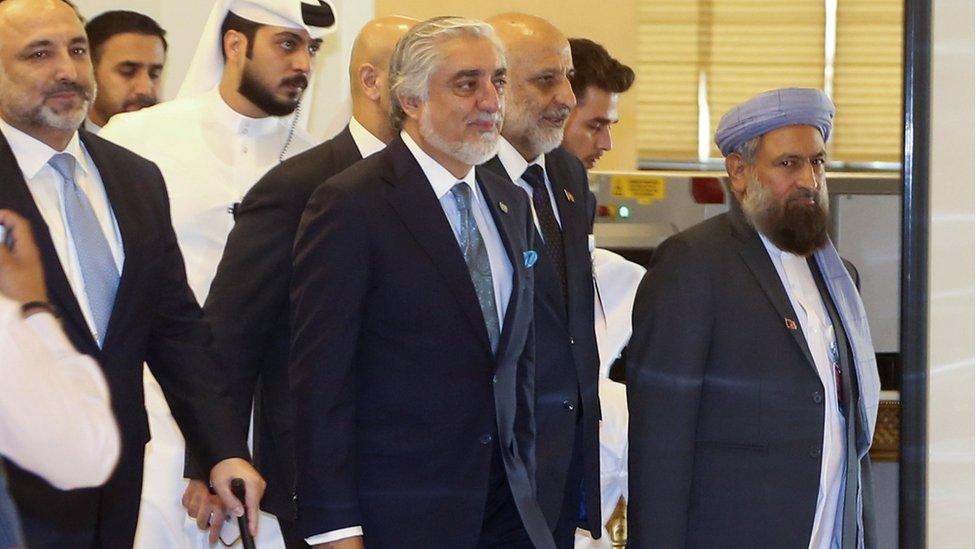
Abdullah Abdullah (centre), head of the Afghan government's delegation, called for a humanitarian ceasefire
The first-ever peace talks between the Afghan government and the Taliban are under way in the Gulf state of Qatar.
US Secretary of State Mike Pompeo called the talks a "truly momentous" breakthrough, while the head of Afghanistan's peace council called it an "exceptional opportunity for peace".
The Taliban did not mention a truce, reiterating instead that Afghanistan should be under Islamic law.
These talks follow a US-Taliban security deal reached in February.
Afghanistan has seen four decades of conflict, with tens of thousands of civilians killed.
Why are these talks historic?
These are the first direct talks between the Taliban and representatives of the Afghan government. The militants had until now refused to meet the government, calling them powerless and American "puppets".
The two sides are aiming for political reconciliation and an end to decades of violence, which began with the 1979 Soviet invasion.
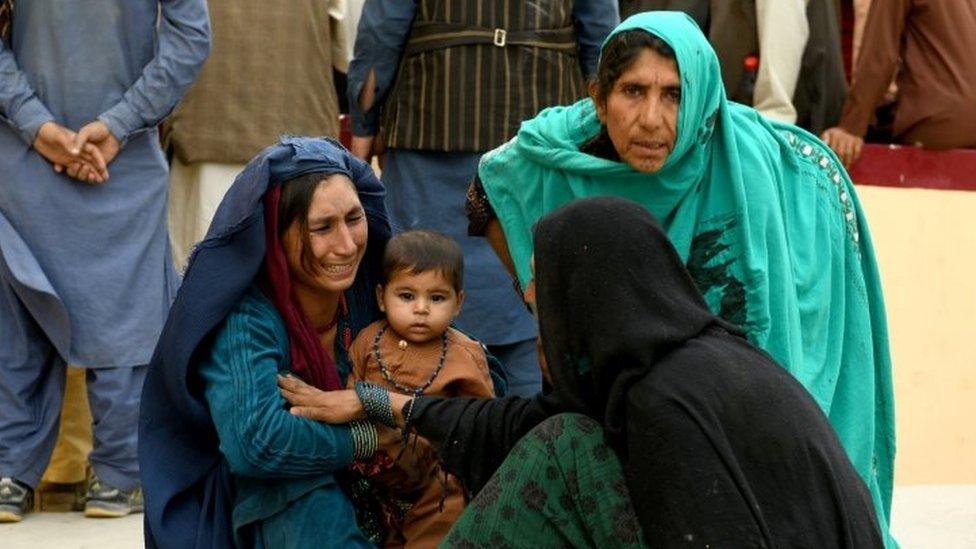
Three generations after a bomb blast in Balkh province - many Afghans have never known peace
US-led troops have been present in Afghanistan for nearly two decades, after launching air strikes to oust the Taliban in 2001 following the deadly 9/11 al-Qaeda attacks in New York.
At 19 years, the conflict in Afghanistan has been the longest in US history.
One senior Afghan negotiator, Nader Nadery, told the BBC it was "an emotional, but very very difficult and important day."
"All of us have lost loved ones and the country that we love so much has been destroyed... it's also difficult because you face the people who, as an example in my case, killed my nephew two weeks ago. And we need to pull all the strength to face them, to talk to them."
What should we expect from the talks?
Everyone taking part in the talks has acknowledged that they will be challenging - there are deep disagreements between the two sides, and the conflict is still continuing in Afghanistan.

A Taliban spokesman told the BBC it was "good progress" that both sides were talking rather than fighting
Mr Pompeo, who spoke at the opening of the talks, said there would "undoubtedly" be "many challenges" - but stressed that a peace deal would benefit future generations, and also affect how much aid the US provided in the years to follow.
Abdullah Abdullah, the head of Afghanistan's delegation, said the two sides "do not have to agree 100% on each of the issues before us", but said he hoped for a humanitarian ceasefire and a peace "accepted and supported by all Afghan citizens".
At the conference Taliban leader Mullah Baradar Akhund called for Afghanistan to have an "Islamic system in which all tribes and ethnicities... live their lives in love and brotherhood".
"Negotiations may have problems but should move forward with patience," he added.
Allow X content?
This article contains content provided by X. We ask for your permission before anything is loaded, as they may be using cookies and other technologies. You may want to read X’s cookie policy, external and privacy policy, external before accepting. To view this content choose ‘accept and continue’.

Many worry that fragile progress made in women's rights could be sacrificed, external in the process, with one women's rights activist pointing out that "there is not a single woman" in the Taliban's negotiating team.
The talks also present a challenge to the Taliban, who will have to bring forward a tangible political vision for Afghanistan. They have so far been vague, stating they wish to see an "Islamic" but also "inclusive" government.
The talks may provide more evidence of how the militant group has changed since the 1990s, when they ruled using a harsh interpretation of Sharia law.
In a statement, Nato Secretary General Jens Stoltenberg said "sacrifices" from "Afghans and our own troops" had helped improve the quality of life for people in the country, particularly for women.
"These sacrifices were not made in vain," he said. "The talks starting today must preserve these gains to reflect the hopes and wishes of all Afghan men and women."
He added that the alliance was "adjusting [its] troop presence" in the country in support of the peace process.

Emotions and worries inside conference hall in Doha

Emotional, nervous, cautiously hopeful, worried - just some of the words spoken by Afghans to express their feelings in this moment.
In a country where turning points of the past have veered into yet more violence, everyone speaks of a profound yearning for peace.
But everyone knows too of the hurdles ahead. After the opening speeches, a Taliban leader remarked: "Isn't it better to talk together than to fight each other?"
An Afghan diplomat was at pains to point out that everyone who spoke in the opening ceremony called for a ceasefire - except the Taliban.
But an Afghan politician noted, positively, Taliban leader Mullah Baradar's statement where he mentioned the difficulties, but also the readiness to resolve them.
The words that matter most will come when Afghans sit down for their first formal face-to-face talks. What matters just as much is what happens on the battlefield still burning back home.

How did we get here?
The US-Taliban agreement reached in February set out a timetable for the withdrawal of foreign forces, in exchange for counter-terrorism guarantees.
The US and its Nato allies agreed to withdraw all troops within 14 months, while the Taliban committed not to allow al-Qaeda or any other extremist group to operate in the areas they control.
The US also agreed to lift sanctions against the Taliban and work with the UN to lift its separate sanctions against the group, as well as cutting its troop numbers in the country from about 12,000 to 8,600 and closing several bases.
The deal also provided for a prisoner swap of about 5,000 Taliban prisoners and 1,000 detained Afghan security personnel.
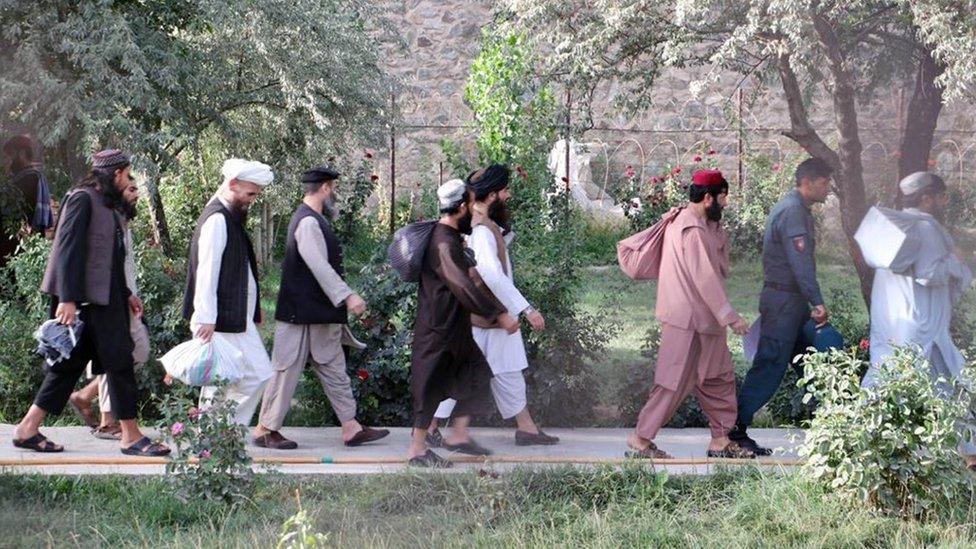
Taliban prisoners preparing to leave a government prison in Kabul in August
Talks between the Afghan government and the Taliban were meant to begin in March but were repeatedly delayed by a dispute over prisoner exchange arrangements, as well as violence in the country.
Some of the men the Taliban wanted freed were commanders believed to have been involved in major attacks.
"We cannot release the killers of our people," a government negotiator said at the time.
According to a report by the Washington Post last month, three Afghans accused of involvement in the deaths of US troops were also a sticking point.
Progress was slow, but in August the Afghan government began to free the final 400 Taliban prisoners, after the move was approved by a grand assembly, or loya jirga of elders.
Not all of the group of 400 were released straight away, after both France and Australia objected to freeing six prisoners accused of fatal attacks against their nationals, including humanitarian workers.
Their release and transfer to Doha on the eve of talks removed the final hurdle.
How did the US get embroiled in the Afghan conflict?
US-led troops have been present in Afghanistan for nearly two decades, after launching air strikes to oust the Taliban in 2001 following the deadly 9/11 al-Qaeda attacks in New York. The Taliban, who protected al-Qaeda leader Osama Bin Laden, had refused to hand him over.
At the outset in 2001, the US was joined in its fight by an international coalition, and the Taliban were quickly removed from power. But the militant group morphed into an insurgent force that dug in and launched deadly attacks against US-led forces and the Afghan military, as well as Afghan government officials.
Is peace with the Taliban possible?
The international coalition ended its combat mission in 2014. The total coalition death toll by that point was nearly 3,500. More than 2,400 US military personnel have been killed. The UK lost more than 450 of its soldiers.
The Watson Institute at Brown University estimated in November 2019, external that more than 43,000 civilians had been killed, with 64,000 Afghan security personnel and 42,000 anti-government fighters dead. The true numbers will never be known.
The US continued its own, scaled-back combat operation after 2014, including air strikes. The Taliban meanwhile continued to gain momentum and now control more territory than at any time since 2001.

You may also be interested in:
Zan TV presenter Ogai Wardak: "If the Taliban come, I will fight them"
- Published7 September 2020
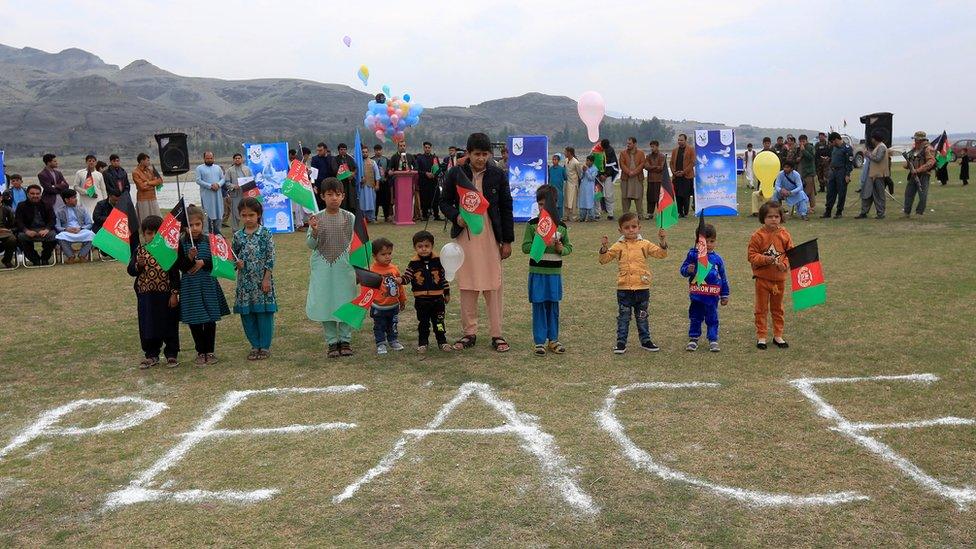
- Published10 September 2020
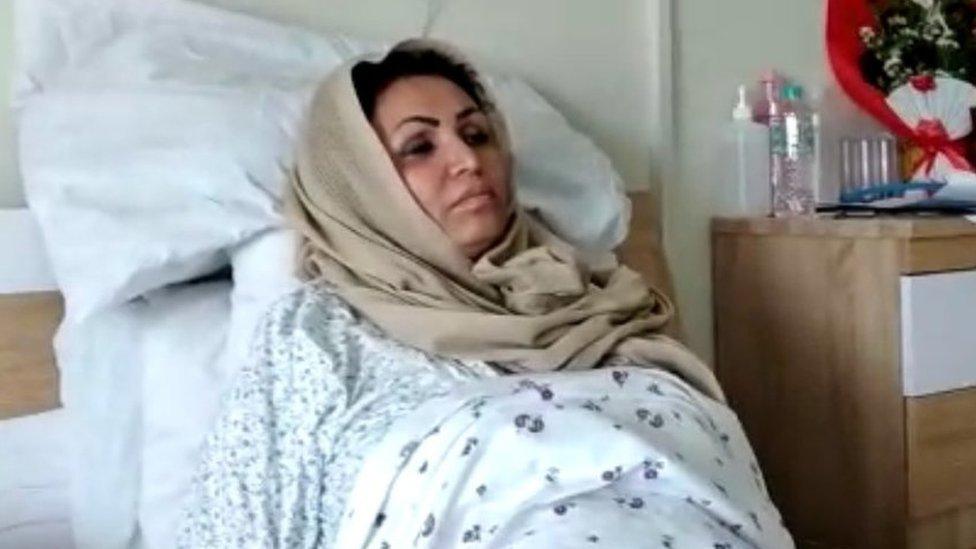
- Published14 August 2020

- Published16 September 2019

- Published27 February 2020
